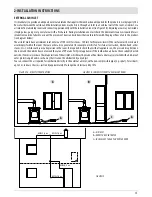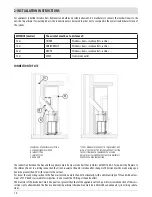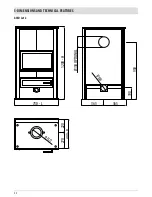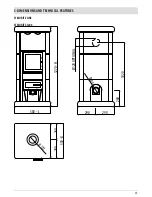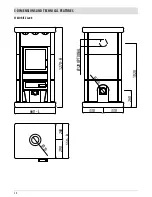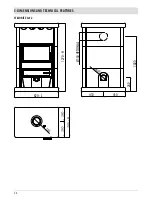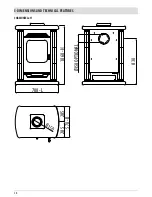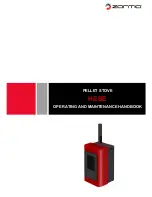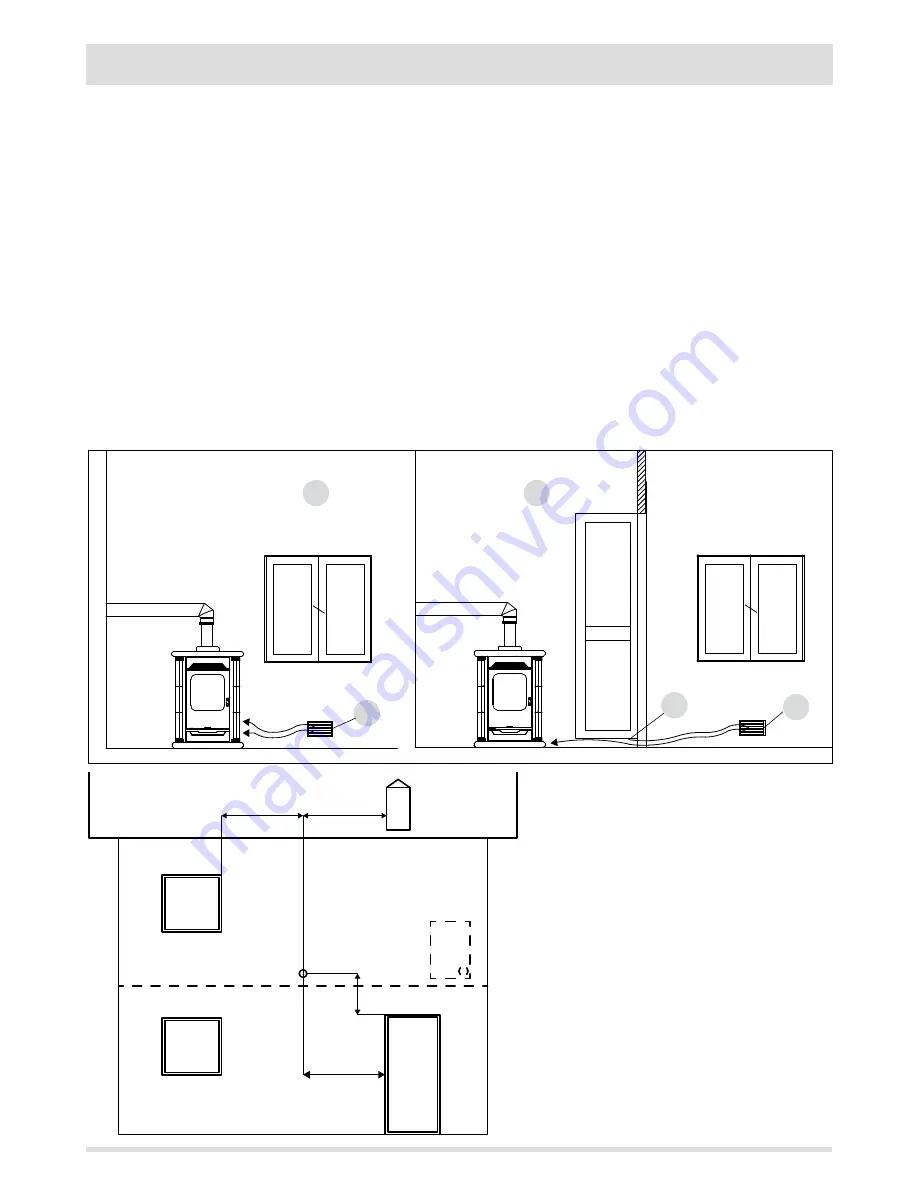
A
A
B
A
C
MIN.1,5 m
MIN.1,5 m
MIN.1,5 m
MIN.0,3 m
15
2-INSTALLATION INSTRUCTIONS
FIGURE 9 A - DIRECTLY FROM OUTSIDE
FIGURE 10
FIGURE 9 B - INDIRECTLY FROM THE ADJACENT ROOM
A=AIR INLET
B=ROOM TO BE VENTILATED
C=INCREASE OF THE GAP UNDER THE DOOR
EXTERNAL AIR INLET
It is mandatory to provide an adequate external air intake that supplies the combustion air required for the product to work properly. The
flow of air between the outside and the installation room may be direct, through an inlet in an external wall of the room; or indirect, via
air intake from adjoining rooms and connecting permanently with the installation room (see Figure 9 b). Adjoining areas may not include
sleeping areas, garages or general areas with a fire hazard. During installation one must check the minimum clearances required for air
intake from outside. Take into account the presence of doors and windows that could interfere with the proper flow of air to the product
(see diagram below).
The air inlet must have a minimum total net area of 100 cm2 (for stoves - 150 cm2 for fireplaces/inserts): the surface must be increased
accordingly if within the room there are other active generators (for example: electric fan for stale air extraction, kitchen hood, other
stoves, etc...), which could cause a depression in the room. It is required to check that, with all appliances on, the pressure drop between
the room and the outside does not exceed the value of 4 Pa (also for Oyster appliances if the combustion air has not been suitably ducted
outside. If necessary increase the intake section of the air inlet, which must be made at floor level and always protected with a bird-proof
outer protection grid and in such a way that it cannot be obstructed by any object.
You can connect the air required for combustion directly to the external air inlet, with a non-compressible pipe (e.g. spiral). For air ducts
up to 3 m, increase the cross-section by approximately 5%, longer ducts increase it by 15%.















